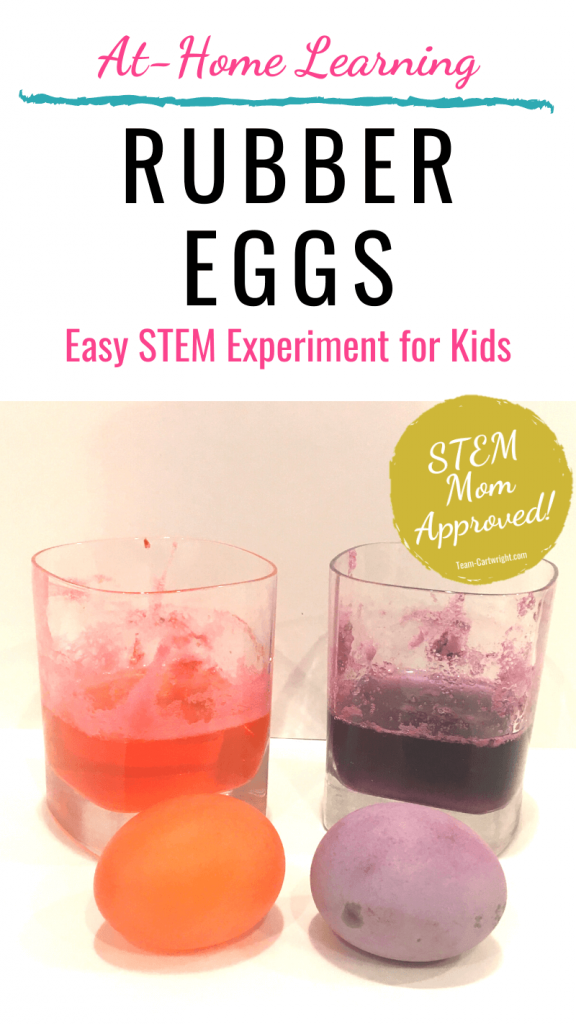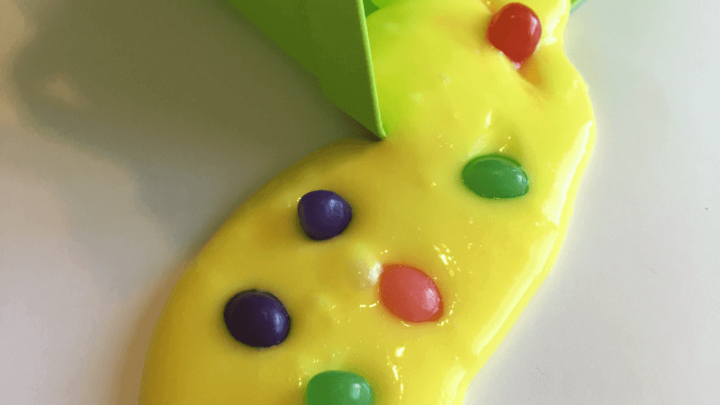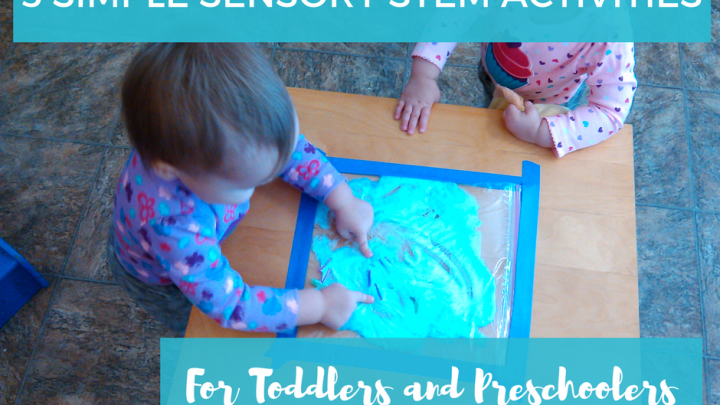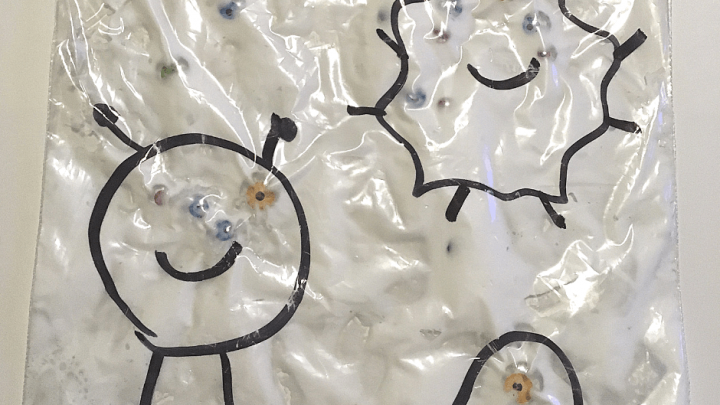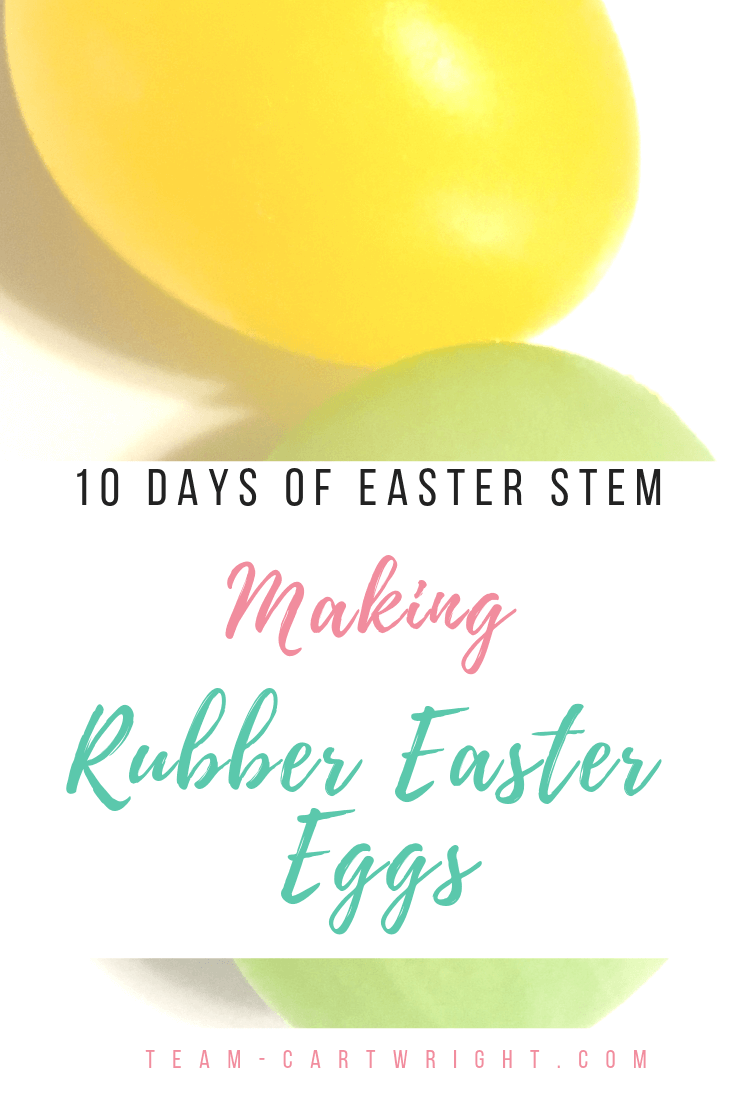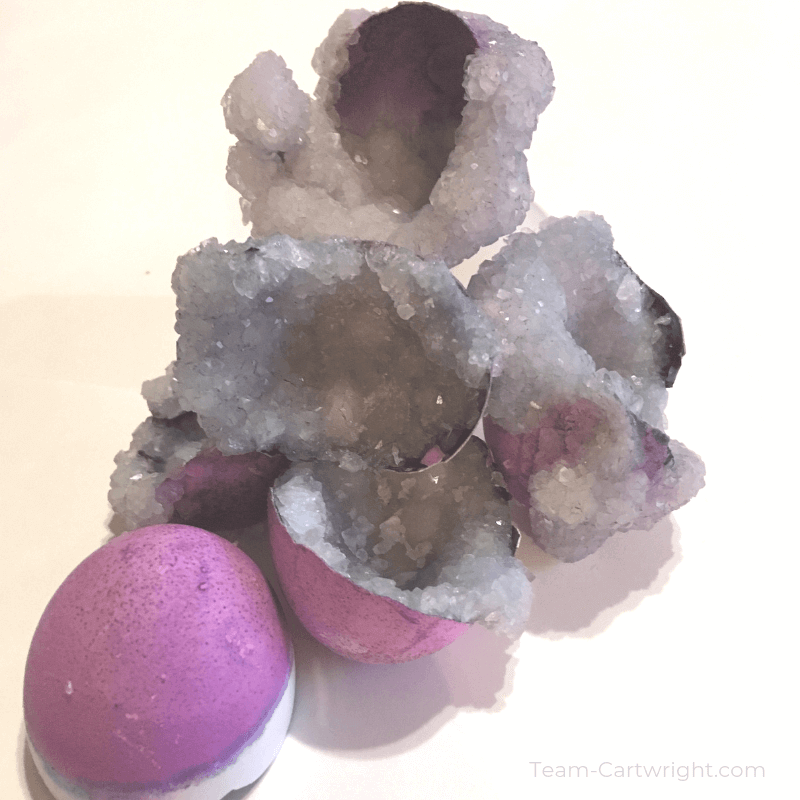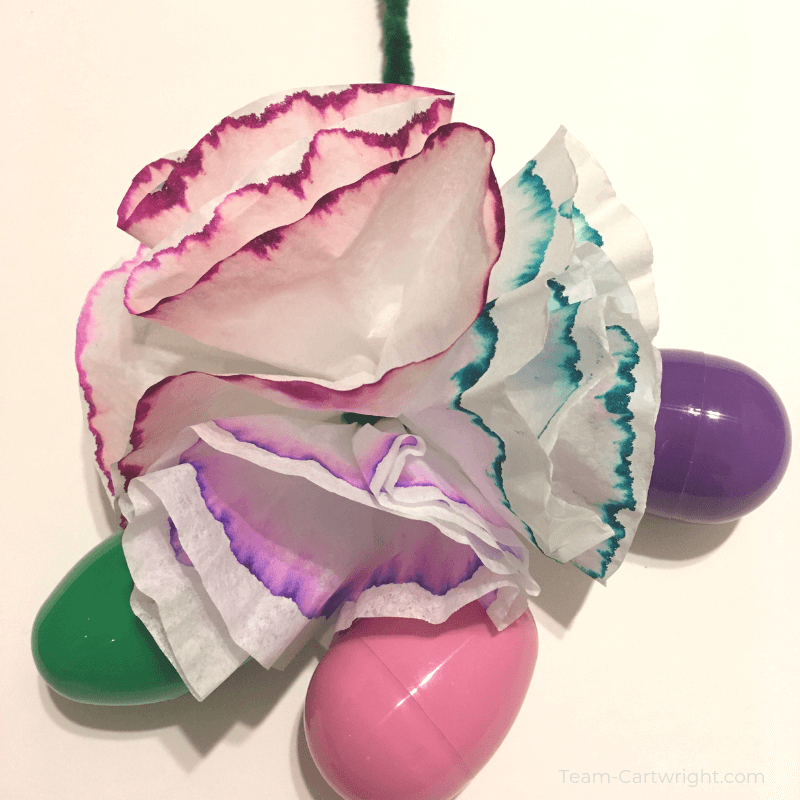Easter Rubber Egg Experiment. How To make a bouncing Easter egg.
Want to make a bouncing Easter egg? Yes, I mean a real egg that bounces. And no, you don’t hard boil them.
This STEM activity is simple, but it demonstrates a fun chemical reaction while giving your children a sensory experience.
You’ll be impressed by what you can uncover when you try this rubber egg science project.
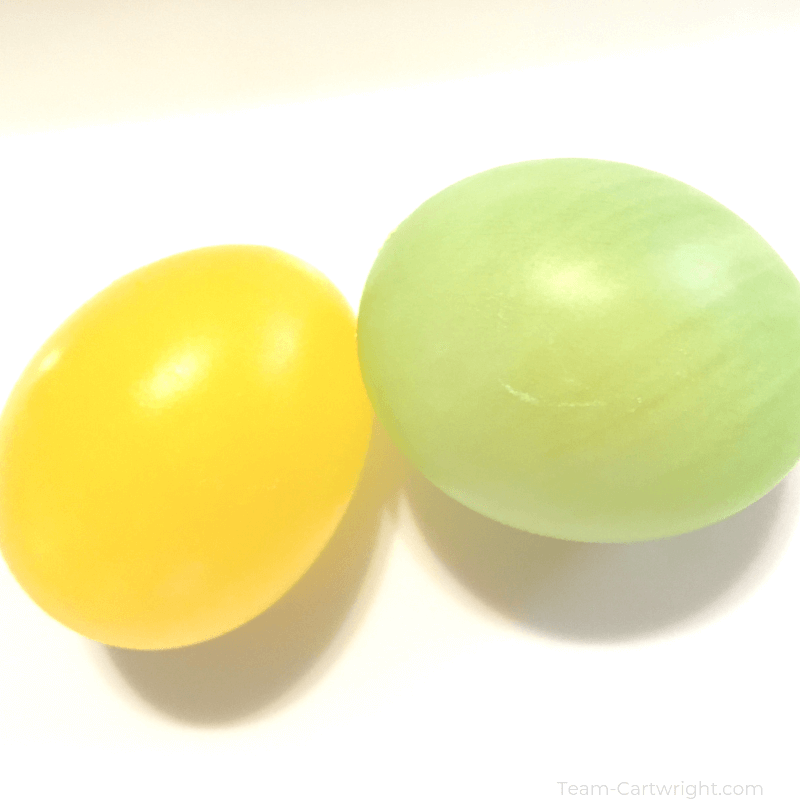
What's In This Post?
Bouncing Easter Eggs
This is a STEM project that is super easy and uses items you already have at home. It does need to sit overnight, but it is fast to set up and then leave alone until the next day.
Then you get to play with your rubber egg.
Materials for the Rubber Egg Experiment
- Raw Eggs
- Vinegar
- Food Coloring (optional)
How To Make Bouncing Easter Eggs
Place your raw egg in a cup. You can use a jar as well, just make sure there is enough room to easily get the egg in and out.
Add enough vinegar to cover the egg. You can add food coloring if you want the full Easter egg experience, but going without is cool too.
Wait 24 to 48 hours.
That’s it! That’s the whole set up. The cool part comes after you have let your egg sit.
Carefully pull your egg out of the vinegar. (It is safe to handle with your hands, but make sure you are careful. And remember to tell your kids not to touch their eyes with vinegar hands.)
Gently rinse the egg in running water and what is left of the shell will come off. What you have is the egg in just its
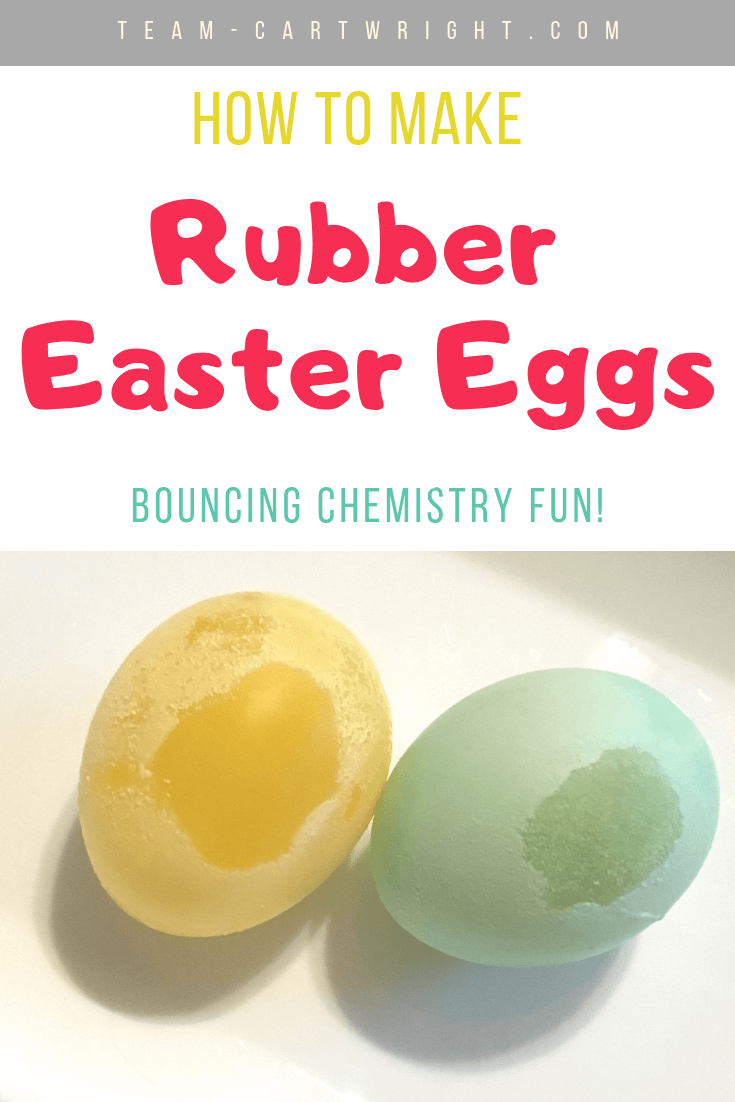
Sensory Play
Let your kids gently feel and squish the egg a little. (Not too much, it can pop!) It has a very interesting consistency of being slightly squishy, but you can feel the firmness of the membrane holding the egg together.
Hold the egg above a bowl or plate and let it fall. Start small, just an inch or two about the surface and then greater heights. It will bounce!
A great experiment is to start low and see how big of
These eggs will break. It is not an if they break, but a when they break situation. That is normal and, I think, and important part of the learning.
But it can be helpful to make a few of these eggs at a time so you have more chances to play with them.
(Learn why sensory play really IS that important for kids: The Big Benefits of Sensory Play and Easy Sensory Activities To Try Today)
STEM Activities To Try
10 Days of Easy Easter STEM
Get 10 Days of Easy Easter STEM! Simple and fun learning activities for preschoolers and toddlers.
How To Make an Easy Easter Egg Rocket
Make an At-Home Rocket Out of an Easter Egg! A simple STEM activity to wow your kids.
The Science Behind Our Bouncing Easter Eggs
So what happens here? The shell dissolves, obviously. The shells are made of calcium carbonate. The vinegar, which is acetic acid, reacts with the calcium carbonate in the eggshell to produce carbon dioxide.
If you observe your eggs while they are in the vinegar you will see bubbles forming on the surface of the egg shell, that’s the sign the chemical reaction is taking place!
You get a chemical reaction, sensory play, and a little physics along with your Easter fun with this activity.
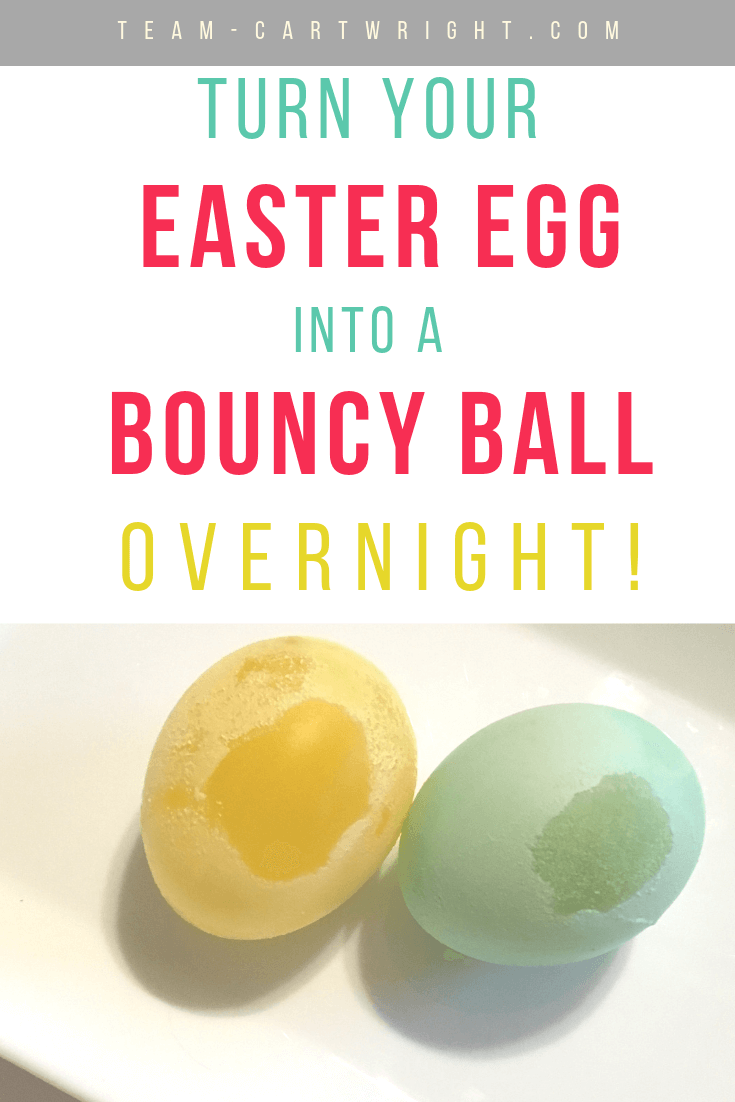
10 Days of Easy Easter STEM
Don’t forget to come back
STEM
Remember that STEM stands for:
Science: Where toddlers and preschoolers learn to observe and start to understand how the world around them works. This is where kids learn to ask questions.
Technology: Where children learn to use the tools that help them explore this world. Yes, computers and screens are a part of this, but they are not the whole story. Simple tools like scissors and magnifying glasses are a part of it too.
Engineering: Where children start to explore how things work. It’s building things like towers, and it is taking things apart to see how they fit together.
Math: Where children learn counting and number recognition. This is where we lay the groundwork of number sense. Number sense is the basic understanding that numbers have individual values and these values interact.
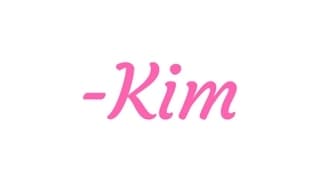
More Activities To Try
5 Simple Sensory STEM Activities for Toddlers and Preschoolers
Easy and Fun Sensory Activities with a STEM twist!
Monster Sensory Bags for Toddlers: Easy and Fun Learning Activity
Simple and Mess-Free Sensory Learning Activity
